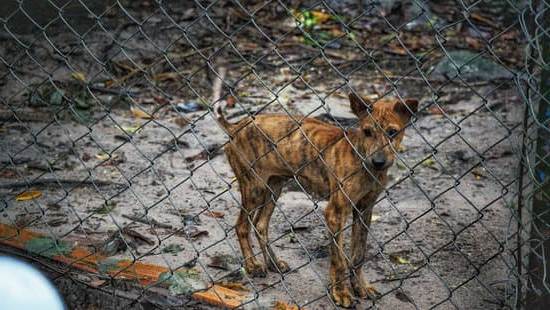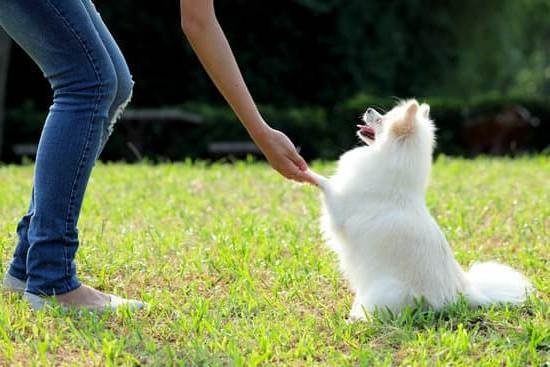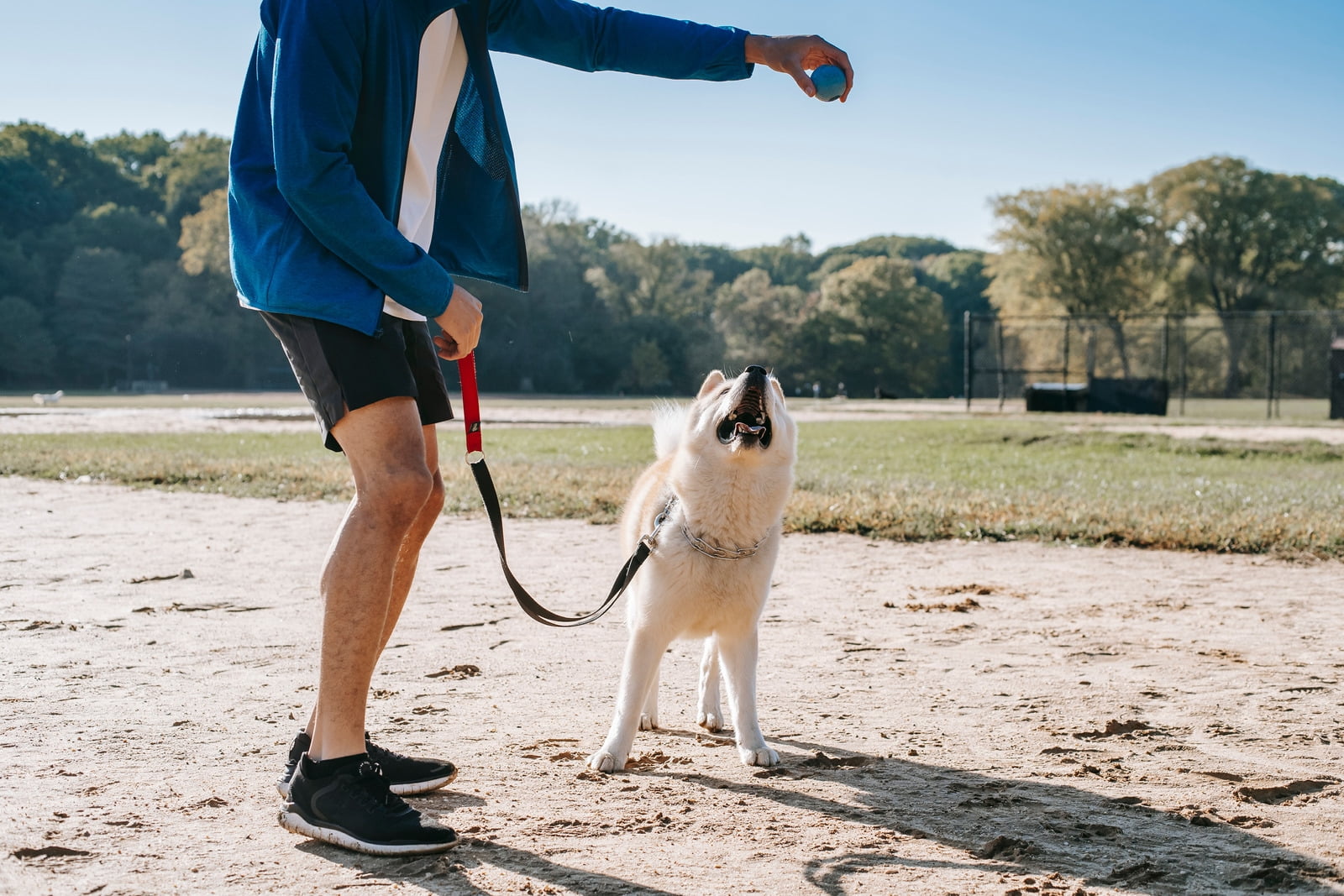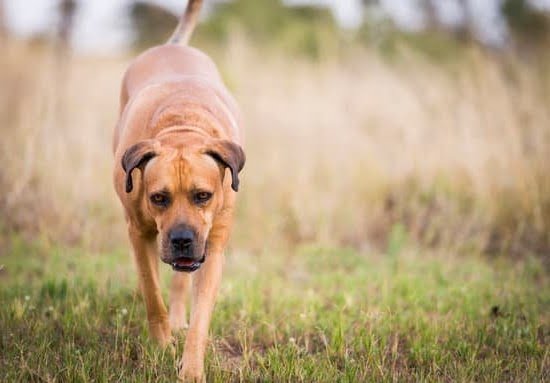Training a 2-year-old dog can be both challenging and rewarding. Many people believe that it’s too late to train a dog once they reach this age, but in reality, it is entirely possible. In this article, we will explore the benefits of training a 2-year-old dog, the importance of establishing a strong bond before training, and effective techniques to get started.
Additionally, we will address common challenges encountered during the training process and set realistic expectations for how long it takes to train a 2-year-old dog. Finally, we will discuss the role of consistency, patience, and positive reinforcement in achieving successful results.
Whether you are a new owner or have had your dog for some time now, this article will provide invaluable information to help you train your 2-year-old furry friend and empower you to enhance your bond with them.
Understanding the Benefits of Training a 2 Year Old Dog
Training a 2-year-old dog can offer numerous benefits for both the owner and the dog itself. While training a younger puppy may be more convenient in terms of shaping behavior from an early age, training an adult dog, specifically one that is 2 years old, can still yield positive results.
One major benefit of training a 2-year-old dog is the opportunity to establish a strong bond between the owner and the dog. By engaging in training sessions, both the owner and the dog can build trust and enhance their communication skills. This bond is crucial for effective training as it lays the foundation for a successful relationship built on mutual understanding and respect.
Additionally, training a 2-year-old dog can address any behavioral issues or habits that may have developed over time. Whether it’s leash pulling, jumping on people, or barking excessively, these behaviors can be discouraging for owners. However, with proper training techniques, these behaviors can be modified and replaced with more desirable ones.
Moreover, trained dogs are generally more well-behaved and less likely to engage in destructive or dangerous activities. Training provides mental stimulation for dogs and helps channel their energy into positive outlets. In turn, this prevents boredom-related behaviors such as chewing furniture or excessive digging.
| Benefits | Data |
|---|---|
| Better Bond with Owner | Increased trust and communication skills |
| Behavioral Issues Addressed | Reduced leash pulling, jumping, excessive barking |
| Prevent Destructive Behaviors | Less chewing and digging |
The Importance of Establishing a Strong Bond with Your 2 Year Old Dog before Training
Establishing a strong bond with your 2-year-old dog before training is crucial for successful and effective training sessions. Building a strong, trusting relationship with your dog helps create a foundation of mutual respect, understanding, and communication. This section will explore why bonding is essential and provide strategies for strengthening the bond with your dog.
Why Bonding is Important
Before diving into training exercises and techniques, it’s important to establish a solid bond with your 2-year-old dog. A strong bond enhances the effectiveness of any training program by creating a positive and cooperative environment. When your dog feels a genuine connection with you, they are more likely to be attentive, receptive, and eager to learn.
Bonding also fosters trust between you and your dog. Trust is fundamental in any relationship, including the one between you and your furry companion. With trust, your dog will feel safe taking risks during training without fear of punishment or disappointment. This encourages them to become more willing to try new behaviors or tasks.
Bonding Strategies
There are several strategies you can implement to establish a strong bond with your 2-year-old dog:
- Spend Quality Time Together: Dedicate time each day solely for bonding activities such as gentle grooming sessions or interactive playtime. This one-on-one time allows you to build trust, establish positive associations, and strengthen your connection.
- Use Positive Reinforcement: Incorporate positive reinforcement techniques into daily interactions with your dog. Reward good behavior with treats, praise, or playtime to let them know they’re doing well.
- Provide Consistency: Dogs thrive on routine and consistency. Establish consistent rules and boundaries within the household so that your dog feels secure knowing what behavior is expected from them consistently.
- Engage in Training Games: Training games not only reinforce good behavior but also serve as an opportunity for fun bonding experiences. Incorporate simple obedience commands into play sessions to make training an enjoyable experience for both of you.
By implementing these bonding strategies, you are laying a solid foundation for effective training sessions. Remember that bond-building is an ongoing process, and the more effort and time you invest in cultivating a strong relationship with your 2-year-old dog, the smoother and more successful your training endeavors will be.
Assessing the Training Needs and Abilities of Your 2 Year Old Dog
When it comes to training a 2 year old dog, it is important to assess their individual training needs and abilities. Every dog is unique, and understanding where your dog is at in terms of their current skill level and behavior will help guide your training approach. Assessing their needs and abilities will allow you to tailor your training methods to best suit your dog’s specific requirements.
Evaluating Current Skills
The first step in assessing the training needs of your 2 year old dog is evaluating their current skills. Take note of what commands they already know, such as sit, stay, or come, and how reliably they respond to these commands. This will give you an idea of the foundation you are working with.
Identifying Areas for Improvement
Once you have evaluated your dog’s current skills, it is important to identify areas where there is room for improvement. This could include behaviors such as leash pulling, jumping on people, or not listening when called. By pinpointing these areas for improvement, you can prioritize them in your training plan and focus on addressing them effectively.
Considering Past Training Experiences
Another important factor in assessing the training needs of a 2 year old dog is considering any past training experiences they may have had. If your dog has previously been trained using certain methods or has had negative experiences with training, this can impact their willingness and responsiveness during training sessions. Understanding their past experiences will help you adapt your approach accordingly and ensure a positive learning environment for your dog.
Effective Training Techniques for 2 Year Old Dogs
Where to Start: Basics of Training
When it comes to training a 2 year old dog, it is important to start with the basics. This means focusing on teaching your dog foundational commands such as sit, stay, come, and lie down. These commands will serve as the building blocks for more advanced training in the future.
Begin by using treats or toys as positive reinforcement to reward your dog when they successfully follow a command. Make sure to keep training sessions short and frequent, as dogs may have shorter attention spans.
What to Avoid: Common Mistakes in Training
While training a 2 year old dog can be challenging, there are certain mistakes that should be avoided in order to ensure successful training outcomes. First and foremost, avoid using punishment-based methods. Physical punishments or yelling can cause fear or anxiety in your dog and hinder their ability to learn. Instead, focus on positive reinforcement techniques such as treats or praise when they obey a command.
Another common mistake to avoid is inconsistency in training. Dogs thrive on routine and predictability, so it is important to establish clear rules and expectations. Be consistent with commands and expectations across different family members and ensure everyone is using the same cues and rewards.
Lastly, avoid overwhelming your dog with too much information at once. Break down each command into small steps and gradually increase the difficulty level as your dog becomes more proficient. Trying to teach multiple commands at once can confuse your dog and make the learning process more difficult.
Advanced Training Techniques: Building on Foundations
Once your 2 year old dog has mastered the basic commands, you can start incorporating more advanced training techniques into their routine. This could include teaching them fun tricks such as giving a paw or rolling over, or working on leash manners or off-leash recall.
One effective technique is clicker training, which uses a clicking sound followed by a treat to mark desired behaviors. This helps your dog understand what they are being rewarded for and reinforces positive behavior.
Another technique is target training, where you teach your dog to touch a specific object with their nose or paw. This can be useful in teaching more complex commands or behaviors.
Remember, consistency and patience are key when implementing these advanced techniques. Celebrate each small success and be prepared to adjust your methods if needed. Training a 2 year old dog requires dedication and effort, but with the right techniques and approach, you can build a strong bond and help your furry friend reach their full potential.
Addressing Common Challenges Encountered When Training a 2 Year Old Dog
Training a 2 year old dog can come with its fair share of challenges. At this age, dogs may have already developed certain habits or behaviors that can be difficult to break. However, with the right strategies and techniques, these challenges can be addressed effectively.
One common challenge encountered when training a 2 year old dog is their tendency to be easily distracted. Dogs at this age are typically full of energy and curiosity, which can cause them to lose focus during training sessions. To address this challenge, it is important to create a structured and calm environment for training. Minimize distractions by choosing a quiet area where there are fewer stimuli and interruptions.
Another challenge that owners may face when training a 2 year old dog is stubbornness. Some dogs at this age may have developed a sense of independence and may be more resistant to following commands. Patience and consistency are key in overcoming this challenge. It is important to establish clear boundaries and consistently reinforce them through positive reinforcement techniques such as rewards or treats.
Furthermore, inconsistency in training methods can also pose as a challenge when training a 2 year old dog. It is crucial to establish a consistent routine and use the same commands throughout the training process. Inconsistency can confuse the dog and hinder their progress. By providing clear cues and reinforcing them consistently, owners can help their 2 year old dogs understand what is expected of them.
Overall, addressing these common challenges requires patience, consistency, and understanding of your dog’s individual needs. Every dog is unique, so it may take time to find the most effective approach for your 2 year old dog’s training journey. With perseverance and the right techniques, however, it is possible to overcome these challenges and successfully train your 2 year old dog into becoming a well-behaved companion.
- Create a structured and calm environment for training to minimize distractions.
- Establish clear boundaries and consistently reinforce them through positive reinforcement techniques.
- Develop a consistent routine and use the same commands throughout the training process.
Setting Realistic Expectations
When it comes to training a 2 year old dog, setting realistic expectations is crucial. While every dog is different and the training process can vary, understanding the average timeframe for training can help owners plan and effectively work towards their goals.
It’s important to remember that even though a 2 year old dog is considered an adult, they are still capable of learning new behaviors and commands. However, compared to training a puppy, training an older dog may take longer as they may have already established certain habits or behaviors.
According to experts, the duration of training for a 2 year old dog largely depends on several factors including the dog’s breed, temperament, previous training experiences, and individual personality. Some dogs may pick up new commands quickly and require minimal repetition while others may need more time and practice.
To set realistic expectations for training a 2 year old dog, it’s helpful to break down the process into different stages. Initially, owners should focus on basic obedience commands such as sit, stay, come, and down. This foundation can be built upon with more advanced skills such as walking on a leash without pulling or performing tricks.
In general, basic obedience training may take around 4-6 weeks for a 2 year old dog. However, it’s important to note that consistency is key in this process. Regular practice sessions with short durations multiple times throughout the day can yield better results than longer but infrequent sessions.
Owners should also consider that behavioral issues or specific challenges their dog may have could affect the overall duration of training. For example, if a 2 year old dog has anxiety or fear-based behaviors that need to be addressed alongside obedience commands, it may prolong the total training time.
| Breed | Average Training Time |
|---|---|
| Labrador Retriever | 4-6 weeks |
| German Shepherd | 6-8 weeks |
| Poodle | 4-6 weeks+ |
The Role of Consistency, Patience, and Positive Reinforcement in Training a 2 Year Old Dog
Consistency, patience, and positive reinforcement play crucial roles in training a 2-year-old dog. These three elements are key to establishing a strong foundation for your dog’s learning and behavior modification. Consistency refers to the importance of setting and maintaining a consistent routine and expectations for your dog.
Patience is necessary because every dog learns at their own pace, and it takes time for them to understand and internalize new commands or behaviors. Positive reinforcement involves rewarding desired behaviors with praise, treats, or toys to motivate and encourage your dog.
One of the main reasons why consistency is vital in training a 2-year-old dog is that it helps them understand what is expected of them. Dogs thrive when they have clear boundaries and consistent rules to follow. By consistently enforcing the same commands, cues, and routines, you provide structure and stability for your dog. This helps them feel secure and confident in their behavior.
Patience is equally important when training a 2-year-old dog. It’s essential to remember that dogs have their own unique learning styles and capacities. Some dogs may pick up on new commands quickly, while others may take longer to grasp them. It’s crucial not to rush or get frustrated during the training process. Instead, focus on being patient with your dog and providing ample opportunities for practice and reinforcement.
Positive reinforcement is a powerful tool in training a 2-year-old dog because it motivates your furry friend to repeat desirable behaviors. When you reward your dog for following commands or exhibiting good behavior, they associate those actions with positive outcomes. This encourages them to continue performing those actions in the future. Rewards can include verbal praise, scratches behind the ears, favorite treats, or engaging playtime with toys.
In summary, consistency sets clear expectations for your 2-year-old dog’s behavior, patience allows them time to learn at their own pace, and positive reinforcement provides motivation for desired actions. Applying these principles in training will help you establish a strong bond with your dog and achieve successful outcomes.
Evaluating the Progress and Adjusting Training Methods for a 2 Year Old Dog
Once you have started training your 2-year-old dog, it is crucial to regularly evaluate their progress and make any necessary adjustments to your training methods. This will ensure that you are providing the most effective and efficient training for your furry friend. Here are some steps to help you evaluate the progress of your 2-year-old dog’s training:
- Assessing Behavior: Observe your dog’s behavior during training sessions and in everyday situations. Take note of any improvements or areas where they may still be struggling. For example, if you have been working on basic obedience commands, such as sit or stay, observe how well your dog follows these commands in different environments and distractions.
- Measuring Skills: Use objective criteria to measure your dog’s progress in specific skills or behaviors. Create a checklist or rating system to keep track of their performance. This can help you identify areas that need further work or reinforcement.
- Seek Feedback: Consider seeking feedback from a professional trainer or behaviorist. They can provide valuable insights and guidance on how well your dog is progressing and offer suggestions for modifications to your training methods if needed.
- Adjustments: Based on the evaluation and feedback received, make adjustments to your training methods as necessary. This might involve trying different techniques, increasing difficulty levels gradually, or focusing more on reinforcing certain behaviors.
To effectively adjust training methods for a 2-year-old dog, consider using a combination of positive reinforcement techniques and consistent daily practice:
- Positive Reinforcement: Continue using positive reinforcement techniques such as treats, praise, toys, or clicker training when your dog exhibits desired behaviors correctly.
- Consistent Practice: Consistency is key when it comes to training a 2-year-old dog. Regular daily practice helps reinforce learned behaviors and establish good habits.
- Gradual Difficulty Increase: As your dog progresses with basic commands and behaviors, gradually increase the difficulty level by introducing distractions or adding complexity.
By regularly evaluating your dog’s progress and making necessary adjustments to your training methods, you can ensure that you are providing the best possible training experience for your 2-year-old dog. Training is an ongoing process, and with patience and dedication, you will continue to see improvements in your dog’s behavior and abilities.
Encouraging Ongoing Training and Enrichment Activities for Continued Development
Training a 2 year old dog is not a one-time event, but rather an ongoing process that requires consistent effort and dedication. Once you have established a solid foundation of training with your dog, it is important to continue to provide enrichment activities that will stimulate their mind and body. This section will explore the importance of ongoing training and enrichment activities for the continued development of your 2 year old dog.
Benefits of Ongoing Training
Continuing to train your 2 year old dog has numerous benefits for both yourself and your pet. Firstly, it keeps their mind engaged and active, preventing boredom and destructive behavior that can often occur in dogs who are not adequately stimulated. Ongoing training also helps to reinforce previously learned commands and behaviors, ensuring they stay sharp in your dog’s memory.
In addition, continued training provides an opportunity for you to strengthen the bond with your furry friend. The time spent together during training sessions allows you to communicate effectively with your dog and improve their overall obedience. Moreover, ongoing training serves as a great way to incorporate mental stimulation into their daily routine, which is essential for their overall well-being.
Enrichment Activities for Continued Development
Aside from traditional obedience training, there are various enrichment activities that can be incorporated into your 2 year old dog’s routine. These activities help keep them mentally stimulated and offer opportunities for growth and learning.
- Puzzle toys: Providing puzzle toys or treat-dispensing toys challenges your dog’s problem-solving skills and keeps them entertained while you’re away.
- Agility courses: Set up an agility course in your backyard or join a local agility club. This not only gives your dog physical exercise but also enhances their coordination, focus, and responsiveness.
- Scent work: Engage in scent detection games where you hide treats around the house or teach them to find specific scents outdoors.
- Interactive play: Engage in interactive games, such as fetch or hide-and-seek, to keep your dog physically active and mentally stimulated.
Remember to tailor enrichment activities based on your dog’s interests and abilities. Be consistent in providing these activities and gradually increase the difficulty level to challenge their problem-solving skills further. By incorporating ongoing training and enrichment activities into your routine, you will continue to foster growth, development, and a strong bond with your 2 year old dog.
Conclusion
In conclusion, training a 2-year-old dog is definitely possible and can yield great results. While it may present some challenges, understanding the benefits of training and establishing a strong bond with your dog before starting are key factors in achieving success. By assessing your dog’s training needs and abilities, you can tailor your approach to effectively train them.
When it comes to training techniques, it is important to start with basic commands and gradually build on them while avoiding overwhelming your dog. Addressing common challenges such as distractions, stubbornness, or fear is crucial in ensuring progress. It is also important to set realistic expectations and understand that the time it takes to train a 2-year-old dog may vary depending on their individual capabilities.
Consistency, patience, and positive reinforcement are fundamental elements in training your 2-year-old dog. Consistently reinforcing desired behaviors will help them understand what is expected of them. Being patient with your dog’s progress and using positive reinforcement, such as treats or praise, will encourage their motivation and make the training process more enjoyable for both of you.
As you continue training your 2-year-old dog, it is essential to evaluate their progress regularly and adjust your training methods accordingly. Not all dogs learn at the same pace or respond to the same techniques, so being adaptable and flexible in your approach will maximize their development.
Furthermore, encouraging ongoing training and enrichment activities beyond basic commands will keep your dog engaged and mentally stimulated. This could include tricks, agility exercises, puzzle toys, or socialization with other dogs. Remember that training should be a lifelong journey that strengthens the bond between you and your furry friend.
By following these guidelines and employing patience, consistency, positive reinforcement strategies, as well as making adjustments along the way based on progress evaluation, owners can empower themselves to successfully train their 2-year-old dogs. With dedication and commitment from both sides, you can create a well-behaved canine companion that brings joy and fulfillment to your life.
Frequently Asked Questions
Is 2 years old too late to train a dog?
Training a dog at 2 years old is not too late, but it may require more patience and consistency compared to training a younger puppy. While it is ideal to start training dogs at a young age, older dogs can still learn new behaviors and commands.
However, it is important to understand that they may already have established habits and behaviors that could take time to change. Consistency and positive reinforcement are key when training an older dog, focusing on redirecting their behavior towards desired actions rather than punishing unwanted behavior.
How difficult is it to train a 2 year old dog?
Training a 2 year old dog can be both challenging and rewarding. The difficulty level may vary depending on the individual dog’s temperament, previous training, and socialization experiences. Some dogs may have had little or no training before the age of 2, while others might have received some basic obedience training.
If a 2 year old dog hasn’t been exposed to much training or socialization previously, it might take more time and effort for them to grasp new concepts and adjust their behavior. However, with consistency, patience, positive reinforcement techniques such as treats or praise, and understanding the dog’s motivations and learning style, it is possible to successfully train a 2 year old dog.
How do you train a 2 year old dog?
When it comes to training a 2 year old dog, consistency is crucial. Begin by establishing clear rules and boundaries for your dog’s behavior. Focus on teaching basic commands like sit, stay, come, and walking on a leash using positive reinforcement methods.
Rewarding desired behaviors with treats or verbal praise helps reinforce their understanding of what you expect from them. Additionally, breaking down complex tasks into smaller steps can make training more manageable for the dog; gradually increasing difficulty as they progress in their abilities.

Welcome to the blog! I am a professional dog trainer and have been working with dogs for many years. In this blog, I will be discussing various topics related to dog training, including tips, tricks, and advice. I hope you find this information helpful and informative. Thanks for reading!





